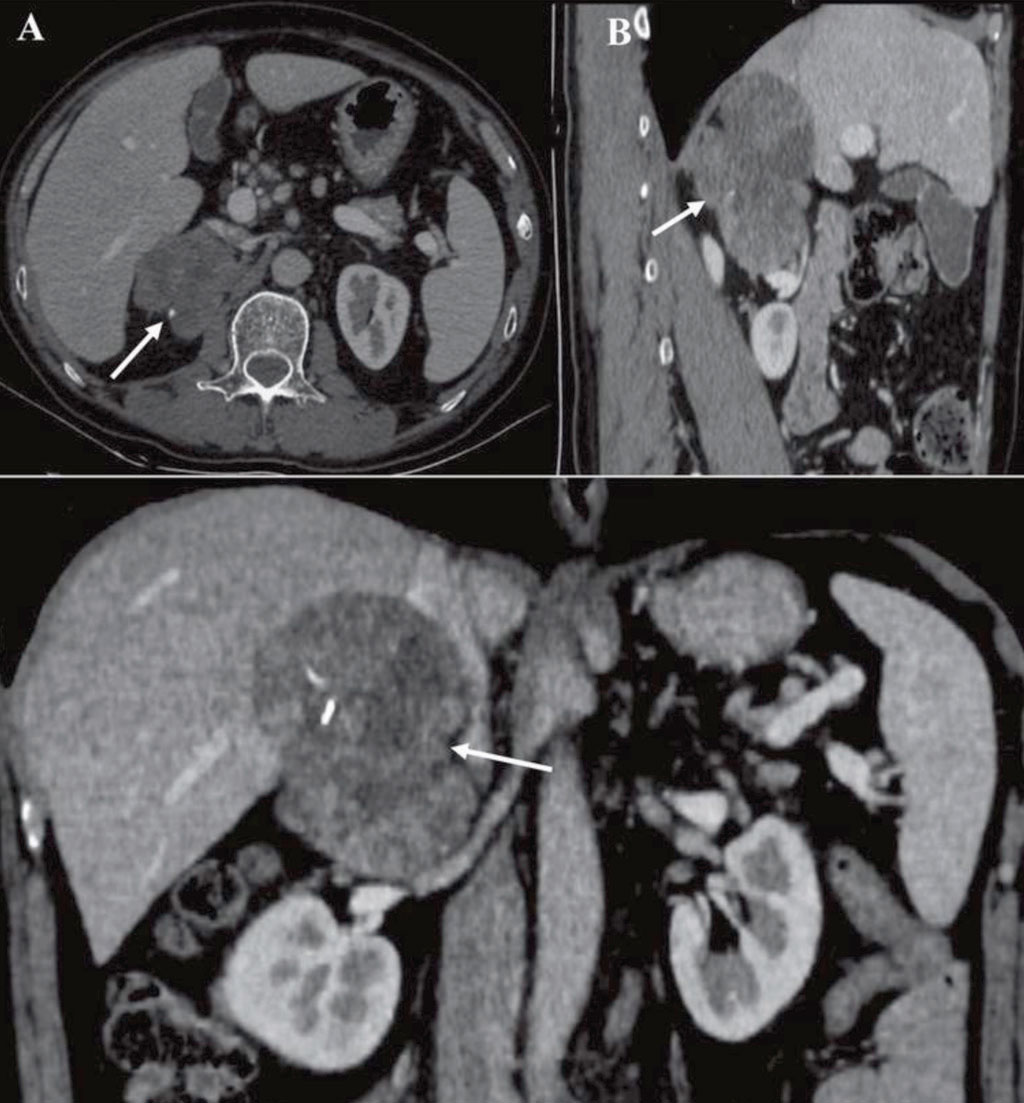Journal of X-Ray Science and Technology to Feature 3D Imaging
By Daniel Beris
Posted on 08 Dec 2016
The current issue of the Journal of X-Ray Science and Technology features three-dimensional (3D) imaging embedded within its articles for the first time.Posted on 08 Dec 2016
The 3D digital multimedia is being used to enhance the value of five papers, which focus on kidney injuries, tumor diagnoses, and dental medicine. The 3D images are incorporated directly into the articles, providing greater insights and learning opportunities, and demonstrating how imaging techniques can contribute to positive patient outcomes. The videos of the rotating 3D images can be accessed directly, allowing readers to examine them in detail and gain deeper understanding of the diagnoses, prognoses, and treatments described.

Image: Contrast-enhanced CT images used to create the dynamic 3D images (Photo courtesy of Journal of X-Ray Science and Technology).
The first study shows how multi-slice spiral CT (MSCT) permits reliable detection of renal trauma and the associated organ or tissue injuries, enhancing diagnosis and classification of renal trauma or internal organ injures. The second article describes how creation of a 3D image helped physicians remove a large nephroblastoma in a 3-year old girl. The third shows how a rare congenital disorder resulting in an almost complete duplication of the ureter from the left kidney of a 27-year-old male patient can be visualized more effectively using MSCT, and how corrective surgery was facilitated by a 3D reconstruction of the patient's anatomy.
The next article describes how surgeons were able to achieve a better surgical outcome by integrating 3D-reconstructed CT images into a dynamic video for preoperative planning and intraoperative guidance during resection of an adrenocortical carcinoma (ACC). The diseased adrenal gland was resected completely, without neighbor organ injury and surgical complications. The final article describes how cone beam computed tomography (CBCT) helps evaluate the hard and soft tissues of the maxillofacial region in 3D and high spatial detail.
“State-of-the-art cross-sectional imaging approaches make it possible to visualize diseases-affected tissues or defected organs with greater assurance by minimizing the interrupter of overlying tissues to focus on individual organs, which aids in the detection and characterization of targeted tissues,” said guest editor Yuanyuan Zhang, MD, PhD, of Wake Forest School of Medicine (Winston-Salem, NC, USA). “The rotated multimedia 3D videos provide animations, which could better help medical students, residents, practitioners, and inquisitive minds better understand the diseases.”
“Digital and multimedia techniques are used more and more to facilitate scientific presentations,” said advisory editor-in-chief Hong Liu, PhD, of the center for bioengineering and school of electrical and computer Engineering at the University of Oklahoma (Norman, USA). “As an interdisciplinary journal publishing numerous papers spanning the field of medical imaging, the Journal of X-Ray Science and Technology should lead the way to serve our authors and readers with advanced presentation methods.”
Related Links:
Wake Forest School of Medicine
University of Oklahoma














